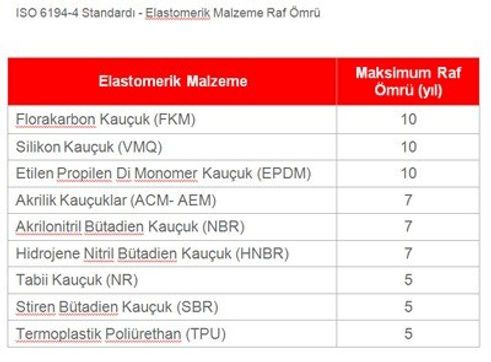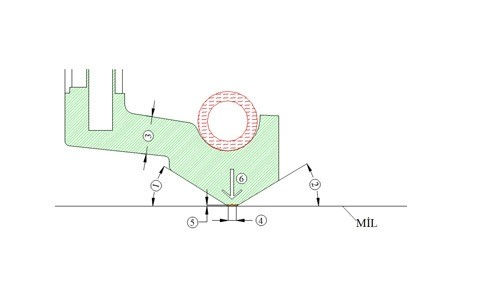Sealing Elements
The function of sealing elements is to prevent the mixing of fluids from two separate environments and to maintain a constant amount of fluid throughout the seal's lifespan. Sealing elements are categorized into two main groups based on their operational mechanism: static seals and dynamic seals.
Static Sealing
Static sealing is achieved by leveraging the incompressibility and elastic modulus properties of elastomeric materials, combined with the seal's compression set. This type of sealing ensures that the pressure exerted by the seal on the surface is always higher than the pressure of the fluid, thus providing an effective seal.
Dynamic Sealing
Dynamic sealing involves seals working on moving surfaces, where the sealing is achieved through the hydrodynamic effects in the thin film layer formed at the contact point. This film layer, generated by the fluid’s hydrostatic pressure under the sealing lip, helps in preventing leaks.
Key Characteristics of Sealing Elements
• Function: Sealing elements protect other machine parts. They differ in elastomeric material composition, physical and chemical properties, tolerances, and sealing geometries, all of which affect their sealing mechanism.
• Design and Storage: The design, production conditions, suitability for use, and storage conditions of rubber-based sealing elements are crucial. Improper storage can shorten the product’s lifespan and lead to leakage issues.
Storage Conditions
• Ambient Temperature: Storage should be at a maximum of 20°C. Higher temperatures can cause rubber to harden permanently, reducing its performance. Extremely low temperatures can make rubber brittle, so seals should be stored to prevent breakage.
• Humidity: Relative humidity should be below 70%. Excessive humidity after temperature changes can create a corrosive environment and degrade certain rubber materials.
• Heat Sources: Seals should be stored away from direct heat sources to prevent permanent physical and chemical changes that can affect their lifespan.
• Light and Ozone Sources: To minimize ozone effects, seals should be kept out of direct sunlight and away from ozone-producing sources like mercury vapor lamps and high-voltage electric motors.
• Packaging: Packaging should protect seals from dust, sand, contaminants, and mechanical damage. Seals should be removed from packaging only when needed.
• Shelf Life: Rubber materials undergo permanent changes after a certain period following the vulcanization process. This period depends on the base polymer’s chemical structure.
The environment where the sealing element will be stored should be planned in a way that prevents any mechanical damage resulting from a heavy object falling onto the part. Additionally, if stacking is done during storage, deformation of the sealing elements due to weight should be prevented. During transportation and storage, care should be taken to stack the sealing elements with the shaft axis perpendicular to the ground.
HOUSING CHARACTERISTICS
The housing where the sealing element will be installed must have suitable dimensions to prevent damage to the sealing element during installation, facilitate easy assembly, and ensure static sealing.
• Tolerance: The internal diameter of the housing should not exceed the H8 tolerance range (ISO 286-2) for effective static sealing.
• Surface Finish: The housing surface roughness should meet specified values to avoid damage during installation. For seals with metal exteriors, these values are even stricter.
• Surface Condition: The housing surface should be free from deep scratches and metal burrs to avoid damaging the seal and ensure proper sealing.
Shaft Characteristics
The shaft where the seal is installed should be dimensioned and finished to prevent damage during installation and provide an optimal surface for sealing.
• Chamfer: The shaft end should have a chamfer or a radius of 1.8 - 3 mm to facilitate installation.
• Tolerance: For dynamic sealing, the shaft’s outer diameter tolerance should be within the h11 range (ISO 286-2).
• Surface Roughness: The surface roughness values should match specified requirements to ensure long service life and formation of an effective film layer. Surfaces with processing marks should be oriented to reduce wear. For rotary shaft seals, marks should align with the direction of rotation.
• Hardness: The shaft hardness should be at least 45 HRC to prevent damage during operation. Unhardened shafts can lead to damage during use.
• Surface Finish: For dynamic seals, the shaft surface must meet the maximum IT8 tolerance range.






Seal Geometry
In rotary shaft seals, dynamic sealing is achieved through the hydrodynamic effects in the thin film layer created under the sealing lip. This is facilitated by the fluid’s hydrostatic pressure and helps return leaked fluid to the system.
Effective management of these hydrodynamic movements involves parameters such as lip angles, the thickness of the flexible part of the lip, the flatness of the contact surface on the shaft, the thickness of the film layer, and the axial load applied by the spring and rubber to the shaft.



